Bruce Springsteen: the 100 most inspiring musicians of all time
American singer, songwriter, and bandleader Bruce Springsteen (b. Sept. 23, 1949, Freehold, N.J., U.S.) became the archetypal rock performer of the 1970s and ’80s.
Bruce Springsteen grew up in Freehold, a mill town where his father worked as a laborer. His rebellious and artistic side led him to the nearby Jersey shore, where his imagination was sparked by the rock band scene and the boardwalk life, high and low. After an apprenticeship in bar bands on the mid-Atlantic coast, Springsteen turned himself into a solo singer-songwriter in 1972 and auditioned for talent scout John Hammond, Sr., who immediately signed him to Columbia Records.

His first two albums, released in 1973, reflect folk rock, soul, and rhythm-and-blues influences, especially those of Van Morrison, Bob Dylan, and Stax/ Volt Records. Springsteen’s voice, a rough baritone that he used to shout on up-tempo numbers and to more sensual effect on slower songs, was shown to good effect here, but his sometimes spectacular guitar playing, which ranged from dense power chord effects to straight 1950s rock and roll, had to be downplayed to fit the singersongwriter format.
With his third album, Born to Run (1975), Springsteen
transformed into a full-fledged rock and roller, heavily
indebted to Phil Spector and Roy Orbison. The album, a
diurnal song cycle, was a sensation even before it hit the
shelves; indeed, the week of the album’s release, Columbia’s
public relations campaign landed Springsteen on the
covers of both Time and Newsweek. Three years passed
before the follow-up, the darker, tougher Darkness on the
Edge of Town (1978), appeared. With “Hungry Heart,” from
The River (1980), Springsteen finally scored an international
hit single.
By then, however, he was best known for his stage shows, three- and four-hour extravaganzas with his E Street Band that blended rock, folk, and soul with dramatic intensity and exuberant humor. The band, a crew of
mixed stereotypes —from rock-and-roll bandit to cool music professional— was more like a gang than a musical unit, apparently held together by little other than faith in its leader.

Bruce Springsteen’s refusal, after Born to Run, to cooperate with much of the record company’s public relations and marketing machinery, coupled with his painstaking recording process and the draining live shows, helped earn his reputation as a performer of principle as well as of power and popularity. Nebraska (1982), a stark set of acoustic songs, most in some way concerned with death, was an unusual interlude.
It was Born in the U.S.A. (1984) and his subsequent 18-month world tour that cinched Springsteen’s reputation as the preeminent writer-performer of his rock-and-roll period.
Springsteen’s social perspective has been distinctly working-class throughout his career, a point emphasized both by his 1995 album, The Ghost of Tom Joad, which concerned itself with the economically and spiritually destitute in America and by his 1994 hit single (his first in eight
years), the AIDS-related “Streets of Philadelphia,” from the film Philadelphia, for which he won both an Academy Award and a Grammy Award.
The other side of Springsteen’s work is reflected in the albums that he produced in the period beginning with Tunnel of Love (1987) and including Human Touch and Lucky Town (released simultaneously in 1992). The songs on these albums are intensely personal reflections on intimate relationships.
In general, they have not been as popular. Bridging all this is the five-record set Bruce Springsteen and the E Street Band Live 1975–1985 (1986), which captures as much of his highly visual stage show of that period as can be rendered in a sole audio form. The breakup of the
E Street Band in 1989 and general trends in pop music fashion curbed Springsteen’s popularity.
In 1998, he put together a box set, Tracks, consisting for the most part of leftover material that had failed to make the cut on his albums with the band. This grandiose gesture established him as prolix beyond all but a couple of peers. Sales of Tracks were trivial compared with those for Live.
In 1999 Springsteen reunited the E Street Band. They appeared with him when he alone was inducted into the Rock and Roll Hall of Fame in early 1999, then spent a year touring with him, resulting in a live album (Live in
New York City [2001]) but only a handful of new songs.
On Sept. 21, 2001, Springsteen performed the national debut of his song “My City of Ruins” on a television special. It was written about Asbury Park but took on a different tone in the wake of the September 11 attacks. That tone continued on The Rising, his 2002 album with the E Street Band, which weighed the consequences of the attacks and their aftermath. Beginning on the Rising tour, Springsteen became an adamant critic of the U.S. government, especially regarding the Iraq War.
Springsteen’s 2005 solo tour, following the release of the Devils and Dust album, explored the full depth of his song catalog and continued his opposition to the administration’s policies.
We Shall Overcome: The Seeger Sessions (2006) took a turn unanticipated by even the closest Springsteen observers. He made the recording over a period of 10 years with a folk-roots band and a horn section.
It featured traditional American folk songs (“Oh, Mary, Don’t You Weep,” “Froggie Went A-Courtin’,” and “John Henry”) as well as songs associated with its inspiration, Pete Seeger (“My Oklahoma Home,” “How Can I Keep from Singing,” and “Bring ’Em Home”). Springsteen’s tour of the United States and Europe in 2006 featured a 20-piece band.
Magic (2007), another E Street Band album, sometimes spoke metaphorically and sometimes explicitly in opposition to the war and government intrusions on civil liberties. Springsteen continued his commentary through a worldwide tour with the E Street Band in 2007 and 2008.
After the April 2008 death of the E Street Band organist and accordionist Danny Federici from melanoma, the band’s playing acquired a darker urgency of tone. The later stages of the Magic tour featured arguably the most assertive, inspired playing Springsteen and the group had ever done.
Please, subscribe to our Library.
If you are already a subscriber, please, check our NEW SCORES’ page every month for new sheet music. THANK YOU!
Working on a Dream, released in early 2009, concerned itself lyrically with thoughts of love and life, how fleeting both are and what it takes to stay the course. The music on the album was a much more sophisticated version of what Springsteen had done on his first two albums, with a greater emphasis on harmony, especially vocal harmonies characteristic of the later work of the Beach Boys. In the lyrics, Springsteen’s knack for particular detail served him well.
On Feb. 1, 2009, Springsteen and the band were the featured entertainment at halftime of Super Bowl XLIII; with an average viewership of 98.7 million, the game was the most-watched televised sports event in American history.
Many fans and much of the press criticized Springsteen for commercializing himself this way. But in the aftermath, it was generally agreed that he had managed to condense the structure, message, humour, and athleticism of his live show into the 12 minutes allotted. On the largest popular culture platform available, Springsteen established that some rock artists remained determined to sustain their vitality and creative ambitions all the way to the end.
Bruce Springsteen’s Sheet Music download here.
Bruce Springsteen – Born In The U.S.A. (Full Album)1984
Track Listing
All tracks are written by Bruce Springsteen.
Side one
1.”Born in the U.S.A.”
2.”Cover Me”
3.”Darlington County”
4.”Working on the Highway”
5.”Downbound Train”
6.”I’m on Fire”
Side Two
7.”No Surrender”
8.”Bobby Jean”
9.”I’m Goin’ Down”
10.”Glory Days”
11.”Dancing in the Dark”
12.”My Hometown”
Personnel
Bruce Springsteen – lead vocals, lead guitar, acoustic guitar
The E Street Band
Roy Bittan – piano, synthesizer, background vocals
Clarence Clemons – saxophone, percussion, background vocals
Danny Federici – Hammond organ, glockenspiel, piano on “Born in the U.S.A.”
Garry Tallent – bass guitar, background vocals
Steven Van Zandt – rhythm guitar, acoustic guitar, mandolin, harmony vocals
Max Weinberg – drums, background vocals
Additional musicians
Richie “La Bamba” Rosenberg – background vocals on “Cover Me” and “No Surrender”
Ruth Davis – background vocals on “My Hometown”
Browse in the Library:
| Artist or Composer / Score name | Cover | List of Contents |
|---|---|---|
| Autum Song (October) – Tchaikovsky The Seasons (Musescore File).mscz | ||
| Autumn In New York (Guitar Arr. With Tab) | Autumn In New York (Guitar Arr. With Tab) | |
| Autumn In New York (Guitar Arr.) (Musescore File).mscz | ||
| Autumn Leaves Joseph Kosma Jazz Standard Piano Solo arr |
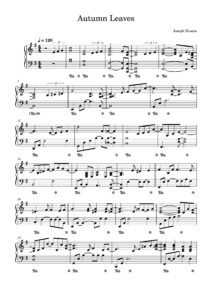 |
|
| Autumn Leaves Joseph Kosma Jazz Standard Piano Solo arr.mscz | ||
| Autumn Leaves Piano Bar Arr. Johnny Mercer Joseph Kosma Jacques André Marie Prévert | Autumn Leaves Piano Bar Arr. Johnny Mercer Joseph Kosma Jacques André Marie Prévert | |
| Autumn Leaves – Jazz Play Along LEAD SHEET MUSIC |
 |
Audio MP3 included in Aebersold’s Vol. 44 (Autumn Leaves) |
| Autumn Leaves – Piano Bar Arr. Johnny Mercer Joseph Kosma Jacques André Marie Prévert (Musescore File).mscz | ||
| Autumn leaves (Eva Cassidy) | ||
| Autumn Leaves As Played By Bill Evans (Musescore File).mscz | ||
| Autumn Leaves Cannonball Adderley And Miles Davis Sax Alto |
 |
|
| Autumn Leaves Music by Joseph Kosma |
 |
|
| Autumn Leaves Piano Solo – as played by Hank Jones.mscz | ||
| Autunm Leaves (Musescore File).mscz | ||
| Avatar – Leona Lewis – I See You |
|
Avatar I see you |
| Avatar sheet music Book James Horner |
|
Avatar |
| Ave Maria (Joyeux Noël OST) Philippe Rombi | ||
| Avenged Sevenfold Nightmare Guitar TAB |
 |
Avenged Sevenfold Nightmare Guitar TAB |
| Avenue Q The Musical Songbook |
 |
Avenue Q The Musical Songbook |
| Avicii – Wake Me Up Sheet Music Piano Vocal Guitar chords |
 |
|
| Avishai Cohen Songbook Vol I |
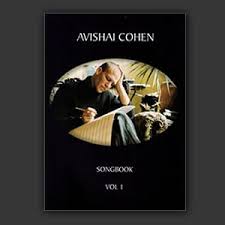 |
Avishai Cohen Songbook Vol I  |
| Avril Lavigne – Complicated | ||
| Avril Lavigne – Freak Out | ||
| Avril Lavigne – Im With You | ||
| Avril Lavigne – Innocence | ||
| Avril Lavigne – My Happy Ending | ||
| Avril Lavigne – When Youre Gone | ||
| Avril Lavigne – Why | ||
| Avril Lavigne the Best Damn Thing Songbook |
 |
Avril Lavigne the Best Damn Thing Songbook |
| Avril Lavigne Under My Skin |
 |
Avril Lavigne Under My Skin |
| Awaken (Jane Eyre OST 2011) Dario Marianelli | ||
| Awakenings Dexter’s Tune by Randy Newman |
 |
|
| Away In A Manger – Guitar TABlature |
 |
|
| Axel F from Beverly Hills Cop b Harold Faltermeyer Piano Vocal Guitar Chords sheet music |
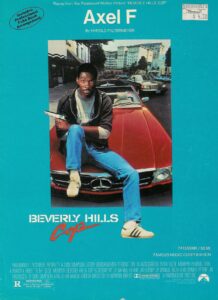 |
|
| Axel Jorgensen ROMANCE for Trombone and Piano Op. 21 |
 |
|
| Aya Hirano – God Knows Suzumiya Haruhi no Yuutsu OST Piano Solo |
 |
|
| Ayumi Hamasaki – Voyage | Ayumi Hamasaki – Voyage | |
| Ayumi Hamasaki All In | Ayumi Hamasaki All In | |
| Aziza Mustafa Zadeh Always Sheet Music |
 |
|
| Aziza Mustafa Zadeh Holiday Blessings |
 |
|
| Aziza Mustafa Zadeh Strange Mood |
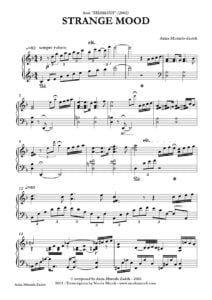 |
|
| Aziza Mustafa Zadeh – Dreaming Sheherezadeh |
 |
|
| Aziza Mustafa Zadeh – Melancholic Princess |
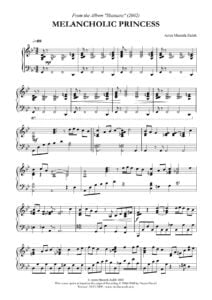 |
|
| Aziza Mustafa Zadeh – Barabashka |
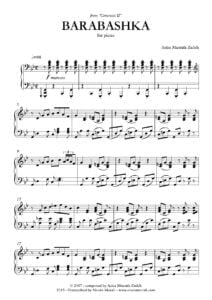 |
|
| Aziza Mustafa Zadeh Two Candles |
 |
|
| B Witched – Cest La Vie | ||
| B Witched – Rollercoaster | ||
| B. B. King Live At The Regal Guitar TAB |
 |
B. B. King Live At The Regal Guitar TAB |
| B.B. King Anthology Guitar TAB |
 |
B.B. King Anthology Guitar TAB |
| B.B. King Greatest Hits |
 |
B.B. King Greatest Hits |
| B.B. King Guitar Play Along Vol. 100 – with MP3 audio embedded with Tablature |
 |
Guitar Play Along Vol. 100 – B.B. King |
| B.B. King The Definitive Collection Guitar Signature Licks with TABs By Wolf Marshall |
 |
B.B. King The Definitive Collection Guitar Signature Licks By Wolf Marshall_compressed |
| Baby Elephant Walk (Hatari OST) Henry Mancini | ||
| Baby Elephant Walk Mancini (Musescore File).mscz | ||
| Babyface, The Songs Of (Kenneth Brian Edmonds) |
 |
Babyface, The Songs Of (Kenneth Brian Edmonds) |
| Bach – Jesu Bleibet Meine Freude Guitar arr.mscz | ||
| Bach – Siciliano In G Minor (Musescore File).mscz | ||
| Bach – Siciliano in G minor Piano solo (Intermediate) |
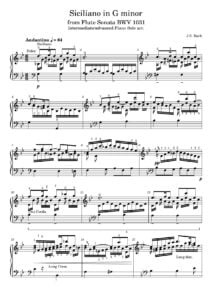 |
|
| Bach J.S. – Aria Mit Variationen Goldberg Variationen Bwv 988 Mit Noten – Sheet Music (Musescore File).mscz | ||
| Bach J.S. – Orchestral Suite No. 1 In C Major Bwv 1066 Passepied (Easy Piano Solo) (Musescore File).mscz | ||
| Bach J.S. For Bass Guitar Mel May Publications |
 |
|
| Bach – Analysis of J.S. Bach’s Wohltemperirtes clavier (48 preludes & fugues) ( Book ) Riemann |
 |
|
| Bach – Arioso (Musescore File).mscz | ||
| Bach – Cello Suite No. 1 In G Major Bwv 1007 Arr. Guitar (Musescore File).mscz | ||
| Bach – Chaconne Bwv 1004 Guitar Arr. (Musescore File).mscz | ||
| Bach – Easy Pieces for Classical Guitar – Notes & Tablature |
 |
Bach – Easy Pieces pieces for guitar |
| Bach – Kurtag – Transcriptions for piano four hands |
 |
|
| Bach – Masterworks of Johann Sebastian Bach ( Book) |
 |
|
| Bach – Music in the Castle of Heaven by John Eliot Gardiner (Book) |
 |
|
| Bach – Praeludium Et Fuga In D Bwv 539 Piano Solo (Musescore File).mscz | ||
| Bach – Prelude And Fugue In A Minor (Bwv 543) (Musescore File).mscz | ||
| Bach – Sheep May Safely Graze (Schafe Könen Sicher Beiden) Aria From The Cantata Bwv 208 Easy Piano |
 |
|
| Bach – Siciliano (Easy Piano arr. from Flute Sonata BWV 1031 with sheet music) |
 |
|
| Bach – Siciliano (Easy Piano Arr. From Flute Sonata Bwv 1031 With Sheet Music) (Musescore File).mscz | ||
| Bach A Life In Music by Peter Williams (2006) Biography Book |
 |
|
| Bach Baden Powell Jesus Bleibet Meine Freude Guitar Tablature Tabs |
 |
|
| Bach Bourée (Piano Solo) Jethro Tull (Musescore File).mscz | ||
| Bach Busoni Complete Transcriptions |
 |
Bach Busoni Complete Transcriptions |
| Bach Bwv 22 – Sanctify Us By Thy Goodness Piano Arr. Harriet Cohen (Musescore File).mscz | ||
| Bach Cello Suite No. 1 In G Major For Guitar (Musescore File).mscz | ||
| Bach Chaconne BWV 1004 Abel Carlevaro Guitar Masterclass IV |
 |
|
| Bach Chaconne D minor arr. for guitar |
 |
|
| Bach Forty Chorales Arr. For Piano Solo |
 |
|
| Bach Fugue In G Minor Bwv 578 (Piano Solo) (Musescore File).mscz | ||
| Bach Fugue Iv Bwv 849 Wtc I (With Sheet Music Noten) (Musescore File).mscz | ||
| Bach Goedicke – Prelude Fugue BWV 539 transcribed for piano |
 |
|
| Bach Gounod Prelude 1 Ave Maria Jazz Improvisation |
 |
|
| Bach Guitar – Fingerpicking Bach (with Tablature) |
 |
Bach Guitar – Fingerpicking Bach |
| Bach J.S. J.S. – French Suites (I to VI) |
 |
|
| Bach J.S. JS – BWV 208 – Sheep May Safely Graze (arr Friedman) | BACH JS BWV 208 | |
| Bach J.S. Air from Orchestral Suite no. 3 in D Major (trans. D. Weymouth) | Bach J.S. -Air-Weymouth | |
| Bach J.S. Jesu, Joy of Man’s Desiring – Piano Arr Groban, Josh |
 |
|
| Bach J.S. – Jazz Play Along Vol. 120 Pdf + Mp3 Audio Tracks |
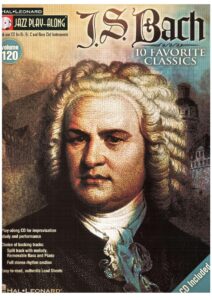 |
Jazz_Play_Along_Vol_120_-_J_S_Bach |
| Bach J.S. – Air on a G String |
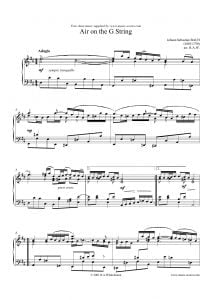 |
|
| Bach J.S. – Busoni Chaconne (piano solo arr.) |
 |
|
| Bach J.S. – BWV 565 Piano – Toccata E Fuga In Re Min | Bach – Bwv 565 Piano – Toccata E Fuga In Re Min | |
| Bach J.S. – Cantata BWV 147 – Coral ‘Jesus Bleibet Meine Freude’ (Easy Piano Solo) | Bach Jesu Joy Of Mans Desiring Cantata Bwv.147 Piano Solo Page 1 Of 5 | |
| Bach J.S. – Das Wohltemperierte Klavier HENLE VERLAG |
 |
|
| Bach J.S. – Easy Pieces for Classical Guitar – Notes & Tablature |
 |
Bach – Easy Pieces pieces for guitar |
| Bach J.S. – English Suites Inglesi (piano) BWV 806-811 |
 |
|
| Bach J.S. – Nun komm, der Heiden Heiland, BWV 659 | Bach, J.S. – Nun komm, der Heiden Heiland, BWV 659 | |
| Bach J.S. – Toccata and Fugue in D minor BWV565 (Piano solo arr. Grainger) |
 |
|
| Bach J.S. – Two Part Inventions Busoni |
 |
|
| Bach J.S. – Well-Tempered Klavier Analysis Part II Dr. H. Riemann |
 |
|
| Bach J.S. – Wilhelm Kempff 10 Bach Transcriptions for piano |
 |
Kempff – 10 Bach Transcriptions |
| Bach J.S. (H Bauer) – Corale Dalla Cantata no. 147 “Jesu, Joy of man’s desiring” BWV 7 (Piano Solo) |
 |
|
| Bach J.S. (Marcello) – BWV 974 -Adagio | Bach (Marcelo) – BWV 974 -Adagio | |
| Bach J.S. 12 Small Preludes |
 |
|
| Bach J.S. 15 Three-voice Inventions |
 |
|
| Bach J.S. 15 Two part Inventions Pure Text Ed. Allan Peterson |
 |
|
| Bach J.S. 6 Partitas( I to VI) |
 |
|
| Bach J.S. AIR ON THE G STRING ARR. SILOTI |
 |
|
| Bach J.S. ARIA SUITE EN RE (arr. for 2 PIANOS) | Bach ARIA SUITE EN RE 2 PIANOS | |
| BACH J.S. Art Fugue Die Kunst der Fuge (Ed. Czerny ) BWV 1080 |
 |
|
| Bach J.S. Art Of Fugue Czerny (Ed. Kalmus) BWV 1080 |
 |
|
| Bach J.S. Busoni BWV564 | ||
| Bach J.S. BWV 1055 keyborad concerto n 4 | ||
| Bach J.S. BWV 971 Italian Concerto | ||
| Bach J.S. Cantata 147 arr. for Easy piano solo | Bach-Jesu-Joy-of-Mans-Desiring-Cantata-BWV.147-Piano-Solo | |
| BACH J.S. CANTATA 22 ARR. PIANO SANCTIFY US BY THY GOODNESS arr. by Harried Cohen |
 |
